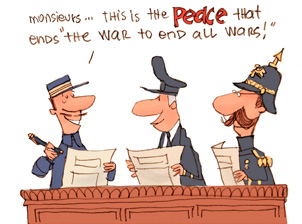Patriotic Holidays
Throughout the calendar year, Americans celebrate different patriotic days. Here’s a look at some of their origins.

Memorial Day
Originally referred to as Decoration Day, Memorial Day is celebrated on the last Monday in May. Begun in the years following the Civil War (1861–1865) as a day to remember those who had died in that conflict, after World War I (1914–1918) it became a day of remembrance for all who have died in service to the country.
Flag Day
Celebrated on June 14, Flag Day remembers the official adoption of a flag to represent the United States in 1777. The day is set aside for citizens to reflect on what the flag symbolizes to the nation and to remember service people who fight to protect it. While Americans have paused to reflect on the flag since the Civil War, Flag Day was officially proclaimed in 1916.

Independence Day
Independence Day is celebrated on July 4. It marks the day in 1776, when delegates to the Second Continental Congress finalized the text for the Declaration of Independence. This document formally declared the Colonies’ intention to separate themselves from British control. Many communities traditionally celebrate the Fourth of July with parades, band music, and fireworks.

Labor Day
Labor Day, celebrated on the first Monday in September, was first unofficially observed in New York City in 1882. By 1894, it had been declared a national holiday to celebrate the contributions of the workers and laborers to the growth and success of the nation.

Constitution Day
Established in 2004, Constitution Day and Citizenship Day is celebrated on September 17. On that day in 1787, the U.S. Constitution, creating a stronger framework for government, was signed. The day calls for Americans to examine the ways they can be good citizens and provide community service.

Veterans Day
November 11 first was observed as Armistice Day for the truce signed in 1918 (at the 11th hour on the 11th day of the 11th month) that ended World War I hostilities between the Allies and Germany. It became a legal holiday in 1938, but in 1954, the name was changed to Veterans Day. That’s when it became a day to remember all Americans who had served in the military, not just those who had fought in the First World War.
Bill of Rights Day
In 1941, 150 years after the Bill of Rights was ratified by the states and added to the U.S. Constitution in 1791, December 15 became an official federal holiday. Bill of Rights Day celebrates the individual freedoms that those 10 amendments to the Constitution guaranteed to the American public.